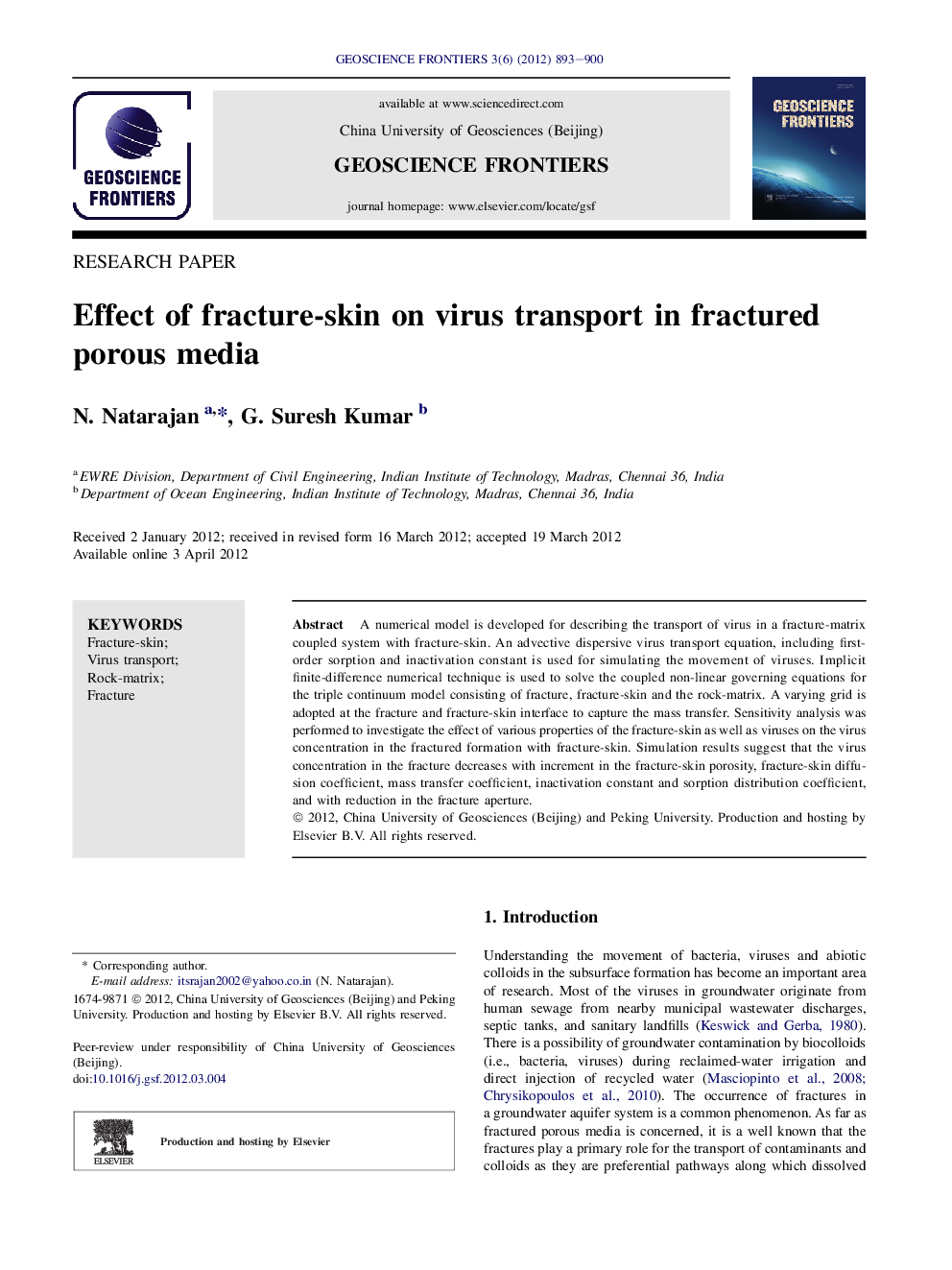| Article ID | Journal | Published Year | Pages | File Type |
|---|---|---|---|---|
| 4681780 | Geoscience Frontiers | 2012 | 8 Pages |
A numerical model is developed for describing the transport of virus in a fracture-matrix coupled system with fracture-skin. An advective dispersive virus transport equation, including first-order sorption and inactivation constant is used for simulating the movement of viruses. Implicit finite-difference numerical technique is used to solve the coupled non-linear governing equations for the triple continuum model consisting of fracture, fracture-skin and the rock-matrix. A varying grid is adopted at the fracture and fracture-skin interface to capture the mass transfer. Sensitivity analysis was performed to investigate the effect of various properties of the fracture-skin as well as viruses on the virus concentration in the fractured formation with fracture-skin. Simulation results suggest that the virus concentration in the fracture decreases with increment in the fracture-skin porosity, fracture-skin diffusion coefficient, mass transfer coefficient, inactivation constant and sorption distribution coefficient, and with reduction in the fracture aperture.
Graphical abstractFigure optionsDownload full-size imageDownload as PowerPoint slideHighlights► Presence of fracture-skin significantly affects the virus transport mechanism. ► Virus concentration decreases with increase in skin porosity, diffusion coefficient. ► Virus concentration decreases with reduction in fracture aperture.
